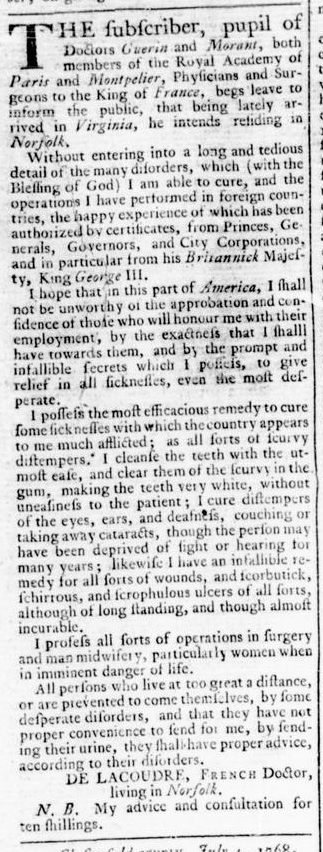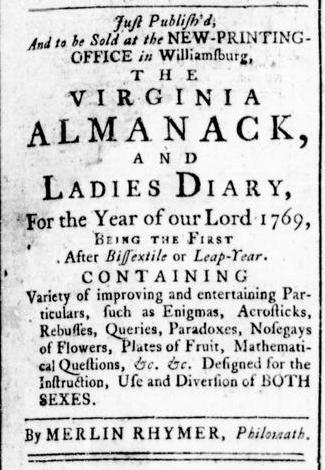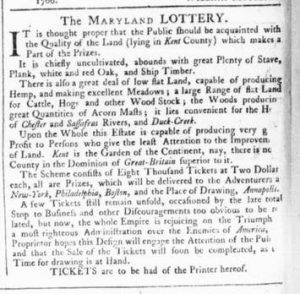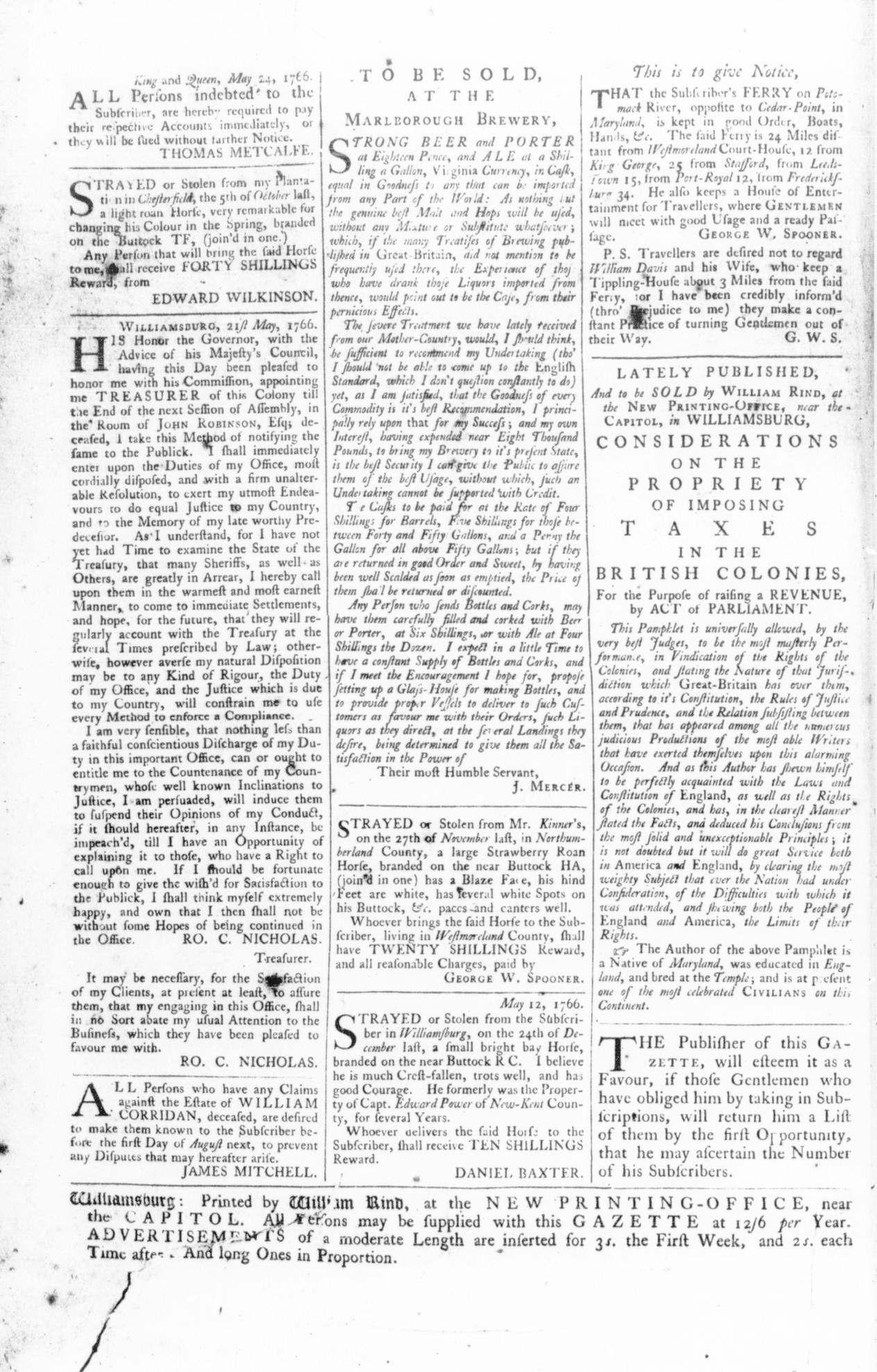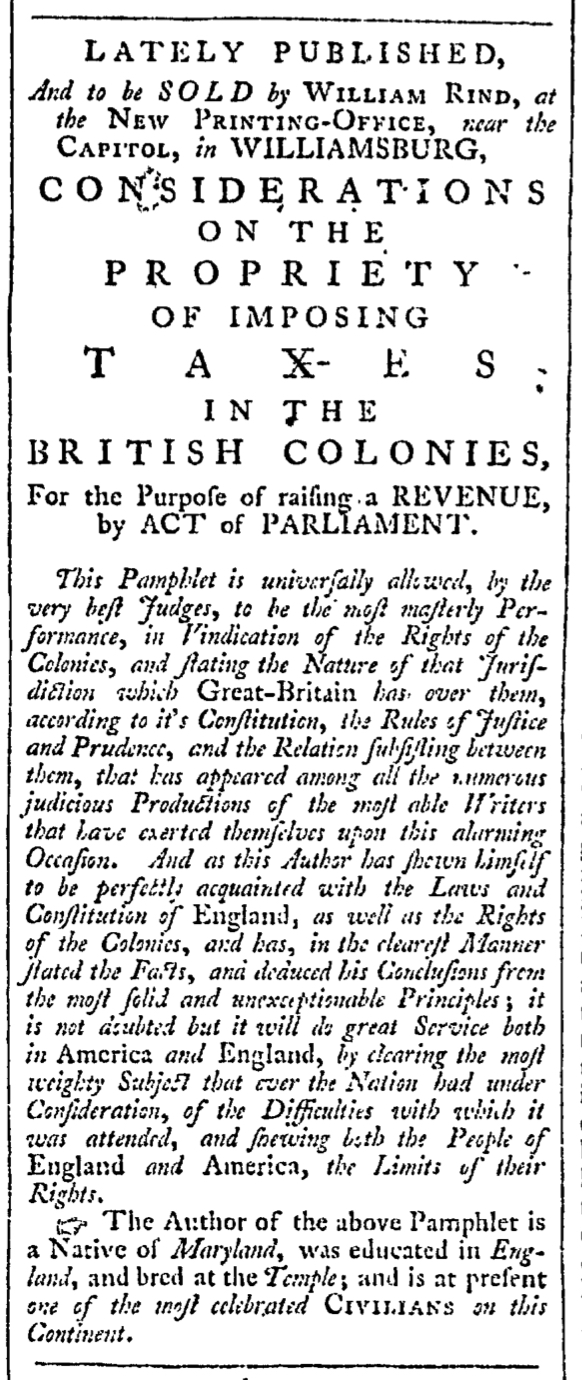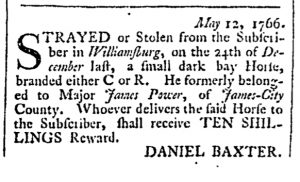What was advertised in a colonial American newspaper 250 years ago today?

“A SCHEME of a LOTTERY.”
Bernard Moore did not specify why he set about “disposing of certain LANDS, SLAVES, and STOCKS” when he published “A SCHEME of a LOTTERY” in the December 22, 1768, edition of William Rind’s Virginia Gazette. Whether he planned to leave the colony or needed the funds to settle debts or some other reason, Moore aimed to raise a guaranteed £18,400 through the sale of lottery tickets rather individual sales of “LANDS, SLAVES, and STOCKS” or an auction that may not have raised the same revenue as the lottery. Of the 124 possible prizes, real estate and livestock comprised the majority, but a total of fifty-five enslaved men, women, and children accounted for the prizes for thirty-nine winning tickets.
Approximately half of Moore’s advertisement listed those men, women, and children held in bondage, describing their relationships and their skills. In some instances Moore intended to keep family members together as a single prize. Such was the case for a “Negro man named Billy, … an exceeding trusty good forgeman” and “his wife named Lucy, … who works exceeding well both in the house and field” as well as a “Negro woman named Rachel … and her children Daniel and Thompson.” Moore separated other families. One prize consisted of a “Negro man, Robin, a good sawyer, and Bella, his wife,” but not their children. “A negro girl named Sukey, about 12 years old, and another named Betty, about 7 years old; children of Robin and Bella” constituted a different prize. Barring some stroke of luck, parents and children would be separated on the day of the drawing.
As the descriptions of Billy, Lucy, and Robin indicate, Moore owned enslaved workers who possessed a variety of skills beyond agricultural labor. Many of them worked in the “forge and grist-mill” also offered as a prize. Moore included these descriptions of their abilities: “a very trusty good forgeman, as well at the finery as under the hammer, and understands putting up his fire,” “a fine chaferyman,” “an exceeding good hammerman and finer,” “an exceeding good forge carpenter, cooper, and clapboard carpenter,” “a very fine blacksmith,” and “a very fine master collier.” Moore also acknowledged gradations of skill level, describing other colliers as “very good” or “good.” Other workers possessed skills not necessarily related to operating the forge, including “a good miller,” “an exceeding trusty good waggoner,” “a good carter,” “a good sawyer,” and “the Skipper” of a flat-bottomed boat.
Moore described a community, though his “SCHEME of a LOTTERY” and his treatment of enslaved men, women, and children as prizes for the winners did not acknowledge it. Indeed, good fortune was not the lot for the twenty-eight men, fourteen women (including the pregnant Pat), and thirteen children. Other sorts of advertisements concerning slaves typically described only one or a few individuals, but the extensive list of names, ages, relationships, and skills in Moore’s notice about his lottery sketched an entire community. Moore intended to raise funds, but he unintentionally produced a document that aids subsequent generations in uncovering the experiences of enslaved men, women, and children who had far fewer opportunities than slaveholders to tell their own stories.


